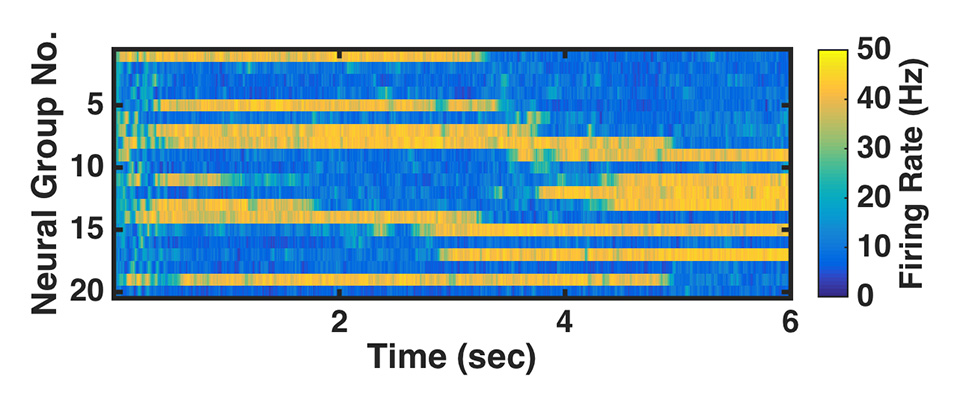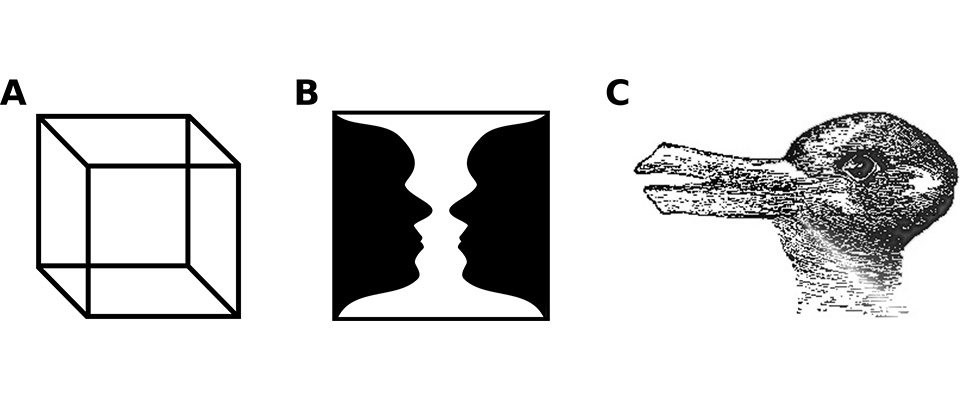Paul Miller
 Professor of Biology
Professor of Biology
Program Chair, Neuroscience
Research
Brains, like the creatures possessing them, are dynamical systems. In my research, therefore, I bring together the computational and mathematical tools used in the study of dynamical systems with data accrued from living brains, neural circuits, and single neurons, to make progress in understanding what makes us tick.
Textbook
An Introductory Course in Computational Neuroscience
by Paul Miller, Brandeis University (MIT Press 2018)
Available from MIT Press.
The codes for the figures and tutorials are available.
Teaching
Neuroscience Courses
- Computational Neuroscience : NBIO136b
- Systems/Computational Neuroscience Journal Club : NBIO340d (Volen 201 Mondays 11am)
IGERT Theory Codes Summer 2013
The IGERT theory codes that Professor Miller showed in class are available.
Quantitative Biology Matlab Challenge, 2011
Welcome to the Matlab Challenge for QB Bootcamp 2011
Biography
- Curriculum Vitae
- B.A. Cambridge University (1991).
- Ph. D. University of Bristol (1994).
- VSO teacher in Malawi (1995-6).
- Joined Georgetown University in 1997.
- Joined Brandeis University in 2000.
Publications
- Coupled dynamics of stimulus-evoked gustatory cortical and basolateral amygdalar activity. Mahmood , A., J. Steindler, H. Germaine, P. Miller, D. B. Katz. J Neurosci 43(3):386-404. (2023).
- Rhythmic coordination and ensemble dynamics in the hippocampal-prefrontal network during odor-place associative memory and decision making. Symanski, C. A., J. H. Bladon, E. T. Kullberg, P. Miller, S. P. Jadhav. elife 11:e79545. (2022).
- A series of unforced events. P. Miller. Neuron 110(1):8-9. (2022).
- A model of naturalistic decision making in preference tests. Ksander, J., D. B. Katz and P. Miller. PLoS Comput Biol 17:e1009012. (2021).
- Attractor-state itinerancy in neural circuits with synaptic depression. Chen, B. and P. Miller. J Math Neurosci 10:15. (2020).
- Stable memory and computation in randomly rewiring neural networks. Acker, D., S. Paradis and P. Miller. J Neurophysiol 122(1):66-80. (2019).
- Spatiotemporal discrimination in attractor networks with short-term synaptic plasticity. Ballintyn, B., B. Shlaer and P. Miller. J Comput Neurosci 46(3):279-297. (2019).
- Combined mechanisms of neural firing rate homeostasis. Miller, P. and J. Cannon. Biol Cybern 113(1):47-59. (2019).
- Does experience provide a permissive or instructive influence on the development of direction selectivity in visual cortex? Roy, A., I. K. Christie, G. M. Escobar, J. J. Osik, M. Popovic, N. J. Ritter, A. K. Stacy, S. Wang, J. Fiser, P. Miller, and S. D. Van Hooser. Neural Dev 13:16. (2018).
- Cortical amplification models of experience-dependent development of selective columns and response sparsification. Christie, I. K., P. Miller and S. D. Van Hooser. J Neurophysiol 118(2): 874-893. (2017)
- Stable Control of Firing Rate Mean and Variance by Dual Homeostatic Mechanisms. Cannon, J. and P. Miller. J Math Neurosci 7(1): 1. (2017)
- Synaptic and intrinsic homeostasis cooperate to optimize single neuron response properties and tune integrator circuits. Cannon, J. and P. Miller. J Neurophysiol 116(5): 2004-2022. (2016).
- Dynamical systems, attractors, and neural circuits. Miller, P. F1000Res 5. (2016).
- Itinerancy between attractor states in neural systems. Miller, P. Curr Opin Neurobiol 40: 14-22. (2016).
- The Behavioral Relevance of Cortical Neural Ensemble Responses Emerges Suddenly. Sadacca, B. F., N. Mukherjee, T. Vladusich, J. X. Li, D. B. Katz and P. Miller. J Neurosci 36(3): 655-669. (2016).
- Spiking neuron network Helmholtz machine. Sountsov, P. and P. Miller. Front Comput Neurosci 9: 46. (2015).
- Emerging feed-forward inhibition allows the robust formation of direction selectivity in the developing ferret visual cortex. Van Hooser, S. D., G. M. Escobar, A. Maffei and P. Miller. J Neurophysiol 111(11): 2355-2373. (2014).
- Accuracy and response-time distributions for decision-making: linear perfect integrators versus nonlinear attractor-based neural circuits. Miller, P. and D. B. Katz. J Comput Neurosci 35(3): 261-294. (2013).
- Decision Making, Models P Miller, in Encyclopedia of Computational Neuroscience: SpringerReference D Jaeger D., R Jung R. (Ed.) Springer-Verlag Berlin Heidelberg (2013).
- Decision Making, Threshold. P Miller, in Encyclopedia of Computational Neuroscience: SpringerReference D Jaeger D., R Jung R. (Ed.) Springer-Verlag Berlin Heidelberg (2013).
- Stabilization of memory states by stochastic facilitating synapses. P Miller, Journal of Mathematical Neuroscience 3(1):19 (2013).
- Acoustic masking disrupts time-dependent mechanisms of memory encoding in word-list recall. KAQCousins, H Dar, A Wingfield and P Miller, Memory and Cognition 42(4):622-638 (2014).
- Inhibitory synaptic plasticity: Spike timing-dependence and putative network function. TP Vogels et al., Front Comput Neurosci 7:119 (2013).
- Stimulus number, duration and intensity encoding in randomly connected attractor networks with synaptic depression, P Miller, Front Comput Neurosci 7:59 (2013).
- Decision-making using linear and non-linear neural circuits. P Miller and DB Katz, J Comput Neurosci 35:261-294 (2013).
- Dynamic afferent synapses to decision-making networks improve performance in tasks requiring stimulus associations or discriminations. M Bourjaily and P Miller, J Neurophysiol 108:513 (2012).
- Excitatory, inhibitory and structural plasticity produce correlated connectivity in random networks trained to solve paired-stimulus tasks. M Bourjaily and P Miller, Front Comput Neurosci 5:37 (2011).
- Synaptic plasticity and network connectivity requirements to produce stimulus-pair specific responses in recurrent networks of spiking neurons. M Bourjaily and P Miller, PLoS Comput Biol 7:e1001091 (2011).
- Stochastic transitions between states of neural activity. P Miller and DB Katz, in The Dynamic Brain: An Exploration of Neuronal variability and Its Functional Significance, edited by Ding M and Glanzman DL, Oxford University Press (2011).
- Effects of degraded sensory input on memory for speech: Behavioral data and a test of biologically constrained computational models. T Piqado, KC Cousins, A Wingfield and P Miller, Brain Research 1365:48-65 (2010).
- Distinct effects of perceptual quality on auditory word recognition, memory formation and recall in a neural model of sequential memory. P Miller and A Wingfield, Front Syst Neurosci 4:14 (2010).
- Stochastic transitions between neural states in taste-processing and decision making. P Miller and DB Katz, J Neurosci 30:2559-2570 (2010).
- Heterogeneous population coding of a short-term memory and decision task. JK Jun, P Miller, A Hernandez, A Zainos, L Lemus, CD Brody and R Romo, J Neurosci 30:916-929 (2010).
- Natural stimuli evoke dynamic sequences of states in sensory cortical ensembles. LM Jones, A Fontanini, BF Sadacca, P Miller P and DB Katz, PNAS 104:18772-18777 (2007).
- Stability of discrete memory states to stochastic fluctuations in neuronal systems. P Miller and X-J Wang, Chaos 16:026109 (2006).
- Inhibitory control by an integral feedback signal in prefrontal: A model of discrimination between sequential stimuli. P Miller and X-J Wang, PNAS 103:201-206 (2006). Link to publicity
- Power-law neuronal fluctuations in a recurrent network model of parametric working memory. P Miller and X-J Wang, Journal of Neurophysiology 95:1099-1114 (2006).
- Analysis of spike statistics in neuronal systems comparing a continuous attractor with multiple, discrete states. P Miller, Neural Computation 18:1268-1317 (2006).
- The stability of a stochastic CaMKII switch: dependence on the number of enzyme molecules and protein turnover. P Miller, A M Zhabotinsky, J E Lisman and X-J Wang, PLoS Biology 3:e107 (2005).
- A recurrent network model of somatosensory parametric working memory in the prefrontal cortex. P Miller, C D Brody, R Romo and X-J Wang, Cerebral Cortex 13 1208-1218 (2003).
- Temperature dependence of Superconductor-Correlated Metal-Superconductor Josephson junctions. J K Freericks, B K Nikolic and P Miller, Appl. Phys. Lett. 82 970-972 (2003). Erratum Appl. Phys. Lett. 83, 1275 (2003).
- Optimizing the speed of a Josephson junction with dynamical mean-field theory. J K Freericks, B K Nikolic and P Miller, J. Mod. Phys. B 16 531-561 (2002).
- Suppression of the ``quasiclassical'' proximity gap in correlated-metal--superconductor structures. B K Nikolic, J K Freericks and P Miller, Phys. Rev. Lett. 88, 077002-1-4 (2002).
- Equilibrium properties of double-screened-dipole-barrier SINIS Josephson junctions. B K Nikolic, J K Freericks and P Miller, Phys. Rev. B 65, 064529-1-11 (2002).
- Reduction of Josephson critical current in short ballistic SNS weak links. B K Nikolic, J K Freericks,and P Miller, Phys. Rev. B 64 212507-1-4 (2001).
- Tuning a Josephson junction through a quantum critical point. J K Freericks, B K Nikolic and P Miller, Phys. Rev. B 64 054511 (2001); Erratum: Phys. Rev. B 68, 099901 (2003).
- Microscopic self-consistent theory of Josephson junctions including dynamical electron correlations. P Miller and J K Freericks, Journal of Physics : Condensed Matter 13 3187-3213 (2001).
- Dynamical charge susceptibility of the spinless Falicov-Kimball model. J K Freericks and P Miller, Phys. Rev. B 62 10022-10032 (2000).
- Possible experimentally observable effects of vertex corrections in superconductors. P Miller, J K Freericks and E J Nicol, Phys. Rev. B 58 14498-14510 (1998).
- Theoretical investigations of the vortex lattice and de Haas - van Alphen oscillations in the superconducting state. P Miller and B L Gyorffy, Journal of Physics : Condensed Matter 7 5579-5606 (1995).
- A recursion method for solving the Bogoliubov equations for inhomogeneous superconductors. G Litak, P Miller and B L Gyorffy, Physica C 251: 263-273 (1995).
- On the Coexistence of Superconductivity and Charge Density Waves. P Miller , B L Gyorffy and B Janko, Physica C 210: 343-351 (1993).
- Substrate-temperature dependence of thin films of BiSrCaCuO deposited by the laser ablation method. P V Kolinsky, P May, M R Harrison, P Miller and D Jedamzik, Superconductor Science & Technology 1: no.6, p. 333-5 (1989.)
- Superconducting thin films of Bi-Sr-Ca-Cu-O deposited using a 'free lasing' infrared Nd:YAG laser. P V Kolinsky, P May, M R Harrison, P Miller, R J Chad and D Jedamzik, Electronics Letters 24: no.19, p. 1204-5 (1988).
- Superconducting thick films of BiSrCaCuO by two spin-on methods. P May, W J O Boyle, M R Harrison, P Miller and D Jedamzik, Superconductor Science & Technology 1: no.2 p. 71-4 (1988).
- Production of superconducting thick films by a spin-on process. P May, D Jedamzik, W J O Boyle and P Miller, Superconductor Science & Technology 1: no.1, p. 1-4 (1988).


